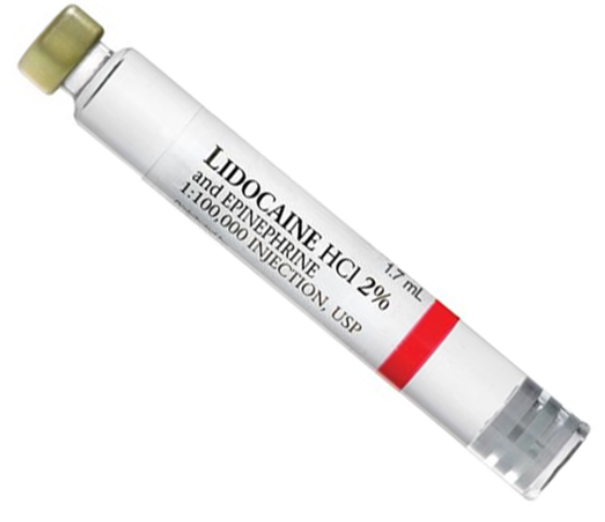ANESTHETIC COMBINATION
- Tina Clarke

- Jul 27, 2020
- 3 min read
Updated: Feb 7, 2022
Anesthetic combination to aid in efficacy and reduced pain for the patient.
For many clinicians, combining anesthetic drugs to decrease pain upon injection and increase effectiveness of the local anesthetic is commonplace. Especially with the inferior alveolar (IA) injection or in an area that is highly inflamed. Often, we use of 3% mepivacaine plain followed by 2% lidocaine with 1:100,000 epinephrine.
I recently had a discussion with some hygienists about the science of why this works so well. This is one of those topics that I admittedly hadn’t done the deep research on. Mainly because, for me, it was a "given". I learned it while I was in school, over twenty years ago. I didn’t question it then, and it still made sense to me now. This is what I was taught. 3% mepivacaine has a higher pH (more basic) and higher concentration of anesthetic molecules. This creates a favorable environment for the nerve to accept the more acidic anesthetic solution, like 2% lido with 1:100,000 epinephrine. This combination is all about a one-two punch of anesthetic to combat inflamed tissue and thick nerve branches. It makes sense, right? Well, the educator in me came to the surface and I decided to dig deep into the research to further understand why it works.

To my surprise, the ideas I had once held so firm in my belief have been challenged by the research. First, I have to say finding research specifically on this topic took some effort, but I could find one study. It was an article posted in the September 2014 Journal of Endodontics titled,
“Does the Combination of 3% Mepivacaine Plain Plus 2% Lidocaine with Epinephrine Improve Anesthesia and Reduce the Pain of Anesthetic Injection for the Inferior Alveolar Nerve Block? A Prospective, Randomized, Double-blind Study”.

Wow! That is a mouth full of a title. Basically, the research indicated it was not statistically different for reduced pain or increased effectiveness than just doing 2 cartridges of 2% lidocaine with 1:100,000 epi.
So, what does this mean? Well it means if you are going to give two injections for the IA don’t worry about using multiple different anesthetics. The thought of having a less painful injection with the plain anesthetic has been debunked by this research as well. Interestingly, it noted that females found the injection with the plain anesthetic more painful than the injection with epinephrine. Also, the longevity and profoundness of the anesthetic is no different between the two different approaches.
I have to say I am still wrapping my brain around this concept and having to come to terms with this research. It is sound and solid research too. But letting go of long-term beliefs can be hard.
I do find comfort however in knowing I only need to use one anesthetic type at one time. Which reduces the opportunity to mix up the maximum recommended doses. That’s a huge win!
The one topic this research didn’t review, which I was really looking for was how effective this one-two punch of anesthetic was on highly inflamed tissue and creating an environment favorable for increased anesthetic acceptance. Perhaps that will be a review for a different time…What I do know, is if quicker onset time is what you are looking for, the use of a buffering agent works wonders.
I hope this information helps you with your anesthetic choice and allows you to Give Your Best Shot!
CHEERS!
Tina
Get your FREE anesthesia technique guide. Head to www.teachertinardh.com
Did you know you can get CE credit for all you are learning?
Head to www.teachertinardh.com and check out the variety of courses available.



Really appreciated this clear breakdown of anesthetic strategy — the idea of a one-two punch with mepivacaine followed by lidocaine with epinephrine is interesting. It reminds me that even in everyday decisions, choosing quality and precision matters. On a different note: thinking of a style upgrade? I recently looked into men leather jackets and custom leather jackets for men — whether for durability, personalization or just storytelling through what we wear, there’s something about investing well-made pieces. Thanks for sharing your insights!
Not familiar with synapse.
I use Synapse for the majority of my patients. If they need more than that, they most likely need a referral to a periodontist. I am licensed to provide LA, but I have found that due to the number of injections required with SRP pts are more compliant with Synapse.
I use septi because it is quick acting and lido because it lasts longer. So do doctors I work with.